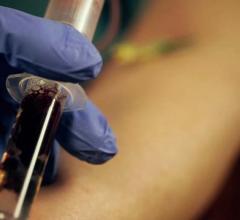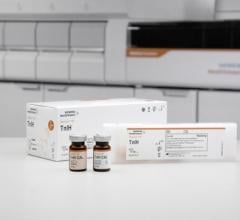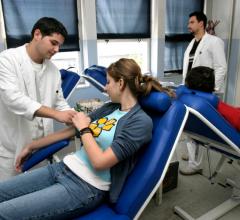Cardiovascular disease (CVD) is the leading cause of morbidity and mortality in the United States in both men and women of every major ethnic group. According to the American Heart Association (AHA), 386,324 Americans died of coronary heart disease in 2009, while 635,000 Americans have a new coronary attack and 280,000 have a recurrent attack each year. Importantly, many acute cardiovascular events happen in patients with no prior signs of atherosclerosis, and it is estimated that an additional 150,000 silent myocardial infarctions occur each year in patients with no prior cardiac history.[1] Despite the unmet medical need, today there are only 215 drug candidates in development for cardiovascular disease, of which 20 drug candidates are being developed for atherosclerosis/coronary artery disease and 17 for ischemic heart disease.
The primary underlying cause of CVD is atherosclerosis, which involves the formation of intimal lesions that are characterized by lipid accumulation, inflammatory response, cell death and fibrosis. Atherosclerotic plaques progressively narrow the coronary artery lumen and impair myocardial blood flow. Atherosclerosis is a complex disease that can be caused by environmental risk factors, genetic traits and their interactions. Improved understanding of the molecular mechanism of atherogenesis will help identify disease-related pathways and biomarkers that may also help to predict the future risk in asymptomatic individuals. Novel technologies, such as high-throughput sequencing have enabled scientists to gain better insights into diseases and disease progression.
Thus far, two major approaches have been undertaken to improve understanding of atherosclerosis. The first is the candidate gene approach, which directly tests the effects of genetic variants of a potentially contributing gene in an association study. The second is the genome-wide association studies (GWAS), in which the entire genome is examined for small variations, called single nucleotide polymorphisms or SNPs. These occur more frequently in people with a particular disease than those without the disease. GWAS have identified loci across the human genome at which common genetic variations are strongly associated with risk of myocardial infarction and coronary artery disease (CAD). [2,3]
For example, the Coronary Artery Disease Genome-Wide Replication Meta-Analysis (CARDIoGRAM) consortium, a collaborative effort to combine data from multiple large-scale genetic studies to identify risk loci (the location of specific culprit genes or DNA sequences) for CAD and myocardial infarction, analyzed 14 GWAS and included 22,233 cases and 64,762 controls. This work has led to the identification of 13 new loci with genome-wide significance. [4,5]
To date, however, only 46 genomic loci with strong associations to CAD have been identified with GWAS. [5,6] Although genomics provides very important information, the analysis of multidimensional biological networks requires more than genomics, and currently, the biological pathways leading to atherosclerosis remain largely unknown. Additionally, biomarkers related to intermediate phenotypes have been described, but biomarkers directly related to atherosclerosis are mostly unidentified. It has been well-established that the genotype to phenotype paradigm is incomplete, and recently, it has been recognized that systems-biology, a biology-based interdisciplinary field that profiles the networks of health and disease by integrating many multi-scale types of biological information (such as genomics, epigenomics, transcriptomics, proteomics, metabolomics, lipidomics, lipoprotein proteomics and glycomics) may permit the development of predictive and actionable models of biological and pathobiological networks.
The ongoing GLOBAL (Genetic Loci and Burden of Atherosclerotic Lesions) study is designed to identify novel disease pathways and biomarkers for CAD and is based on an integrated approach of next-generation phenotyping, using cardiovascular computed tomography (CT), combining non-contrast enhanced CT and contrast-enhanced CT coronary angiography (CTA) with pan-omics and bioinformatics. It is the largest, prospective study ever undertaken in cardiovascular disease to phenotype patients using cardiovascular CT. Subsequently, patients will each undergo a pan-omic analysis including whole genome sequencing, whole genome epigenomics, whole transcriptome sequencing from peripheral blood, unbiased, mass-spectrometry –based proteomics, metabolomics, lipidomics and lipoprotein proteomics. The investigators anticipate 22 trillion data points to be generated from this study. These data points will then be analyzed using specifically developed systems- and biology-based bioinformatics. The study has recently completed enrollment with 7,500 patients. [7]
A cornerstone of the GLOBAL study is cardiovascular CT, which allows the precise phenotyping of coronary atherosclerotic plaques and an accurate differentiation between “healthy” and “disease” groups. The current diagnostic strategies of CAD focus predominantly on the detection of myocardial ischemia and hemodynamically significant luminal narrowing, but not on the detection and characterization of coronary atherosclerotic plaques. Lesions susceptible to rupture, usually have a distinct necrotic core covered by a ruptured thin layer of fibrous cap, are the cause for the majority of acute coronary syndromes and have different morphologic characteristics than stable lesions.[8]
Cardiovascular CT is a noninvasive imaging technique that enables the evaluation of the coronary atherosclerotic plaque beyond the degree of luminal narrowing and plaque type as defined by the relative contribution of non-calcified and calcified components (i.e., calcified, non-calcified and partially calcified plaques). Several studies have demonstrated the strong prognostic value of CCTA derived plaque volume to predict future coronary events. The ATLANTA (assessment of tissue characteristics, lesion morphology, and hemodynamics by angiography with fractional flow reserve (FFR), intravascular ultrasound (IVUS) and virtual histology (VH), and CT in atherosclerotic plaques) I study validated CCTA against invasive angiography, IVUS and VH and demonstrated that the CCTA measurements of coronary plaque correlate with IVUS/VH and can identify the so called vulnerable plaque and the vulnerable patient. [9,10,11]
Recent advances in the multidisciplinary management of CAD have improved patient outcomes, but there remains a clinical necessity for novel therapeutic targets and biomarkers. The collaboration of researchers from a wide variety of disciplines will advance the identification of disease-related biological pathways, which will allow for more effective treatments and potential prevention of fatal diseases such as CAD. The combination of next-generation phenotyping, pan-omics and integrated, systems-biology-based bioinformatics is an important step forward toward achieving this goal.
Editor’s note: Szilard Voros, M.D., is a visiting professor of radiology and medicine/cardiology at Stony Brook University Medical Center in Stony Brook, New York. He is also founder and CEO of the Global Genomics Group (G3).
References:
10. Voros S, Rinehart S, Vazquez-Figueroa JG, Kalynych A, Karmpaliotis D, Qian Z, Joshi PH, Anderson H, Murrieta L, Wilmer C, Carlson H, Ballard W, Brown C. “Prospective, Head-to-Head Comparison of Quantitative Coronary Angiography, Quantitative Computed Tomography Angiography, and Intravascular Ultrasound for the Prediction of Hemodynamic Significance in Intermediate and Severe Lesions, Using Fractional Flow Reserve as Reference Standard (from the ATLANTA I and II Study).” Am J Cardiol 2014.



 October 09, 2019
October 09, 2019 








